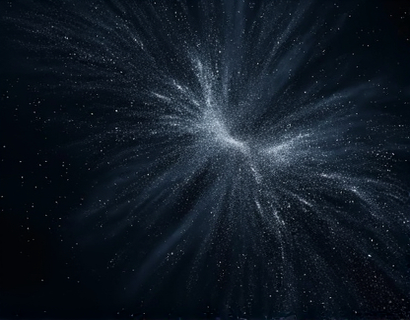Unlocking the Universe: In-Depth Insights for Curious Minds
The cosmos, an endless expanse of mystery and wonder, has captivated human imagination for centuries. From the earliest stargazers to modern astrophysicists, the quest to understand the universe drives curiosity and innovation. This comprehensive guide aims to embark on an enlightening journey through the cosmos, providing in-depth insights into various aspects of cosmic knowledge. Designed for curious minds, this collection of articles and current insights is an essential resource for anyone eager to deepen their understanding of the universe.
Exploring the Fundamentals of Astronomy
The study of astronomy begins with the basics: understanding the celestial bodies and phenomena that populate our night sky. Stars, planets, galaxies, and cosmic events such as supernovae and black holes form the foundation of astronomical knowledge. Each element plays a crucial role in the grand tapestry of the universe.
Stars, the luminous spheres of plasma held together by gravity, are the building blocks of galaxies. They undergo nuclear fusion in their cores, converting hydrogen into helium and releasing vast amounts of energy in the process. This energy is what makes stars shine, and it follows a life cycle that can range from millions to billions of years, depending on their mass.
Planets, including our own Earth, orbit around stars. They are categorized based on their composition and location within the solar system. Terrestrial planets like Earth and Mars are rocky and relatively small, while gas giants like Jupiter and Saturn are massive and composed primarily of hydrogen and helium. The study of planets, known as planetary science, involves understanding their formation, composition, and potential for hosting life.
Galaxies and the Large Scale Structure of the Universe
Galaxies are vast collections of stars, gas, dust, and dark matter, bound together by gravity. The Milky Way, our home galaxy, is a barred spiral galaxy containing an estimated 100 to 400 billion stars. Observations of other galaxies, such as the Andromeda Galaxy, reveal similar structures and dynamics, providing insights into the formation and evolution of galaxies over cosmic time.
The large scale structure of the universe is a network of galaxy clusters and superclusters separated by vast voids. This cosmic web is influenced by the distribution of dark matter, an invisible form of matter that does not interact with electromagnetic radiation but exerts gravitational effects. Understanding the large scale structure helps scientists probe the fundamental properties of the universe, including its age, composition, and ultimate fate.
Cosmic Phenomena: Supernovae and Black Holes
Supernovae are among the most energetic events in the universe, marking the eExpansive death of massive stars. These cataclysmic events not only release enormous amounts of energy but also synthesize and disperse heavy elements into space, enriching the interstellar medium. Supernovae play a crucial role in the chemical evolution of galaxies and the formation of new stars.
Black holes, regions of spacetime where gravity is so strong that nothing, not even light, can escape, are another fascinating phenomenon. They form from the collapse of massive stars or through the merging of smaller black holes. The event horizon, the boundary beyond which nothing can return, is a key feature of black holes. Recent observations, such as the Event Horizon Telescope's image of the black hole in the galaxy M87, have provided unprecedented insights into these enigmatic objects.
Dark Matter and Dark Energy: The Mysteries of the Cosmos
Despite comprising about 95% of the universe, dark matter and dark energy remain among the greatest mysteries in modern physics. Dark matter, which does not emit, absorb, or reflect light, is inferred from its gravitational effects on visible matter, radiation, and the large scale structure of the universe. Its exact nature remains unknown, but it is crucial for explaining the observed behavior of galaxies and galaxy clusters.
Dark energy, a form of energy that permeates all of space and accelerates the expansion of the universe, is equally enigmatic. Discovered in the late 1990s through observations of distant supernovae, dark energy makes up about 68% of the universe's total energy content. Understanding dark energy is vital for comprehending the ultimate fate of the universe, whether it will continue to expand indefinitely or eventually collapse.
Exoplanets and the Search for Life
The discovery of exoplanets, planets orbiting stars outside our solar system, has revolutionized our understanding of planetary systems. With thousands of exoplanets confirmed, ranging from Earth-like rocky worlds to massive gas giants, the search for habitable planets and extraterrestrial life has gained momentum. The habitable zone, the region around a star where conditions might allow liquid water to exist on a planet's surface, is a key factor in identifying potentially habitable worlds.
Advanced telescopes and space missions, such as the Kepler Space Telescope and the upcoming James Webb Space Telescope, are instrumental in detecting and characterizing exoplanets. These instruments use various methods, including the transit method and radial velocity technique, to identify the subtle signs of planets around distant stars. The potential for finding life beyond Earth is a driving force behind these efforts.
Cosmic Evolution: From the Big Bang to the Present Day
The history of the universe, from the Big Bang to the present day, is a story of cosmic evolution. The Big Bang theory posits that the universe began as a hot, dense state around 13.8 billion years ago. In the first fractions of a second, the universe underwent rapid expansion, a process known as inflation, which set the stage for the formation of galaxies and large scale structures.
As the universe expanded and cooled, protons and neutrons combined to form atomic nuclei in a process called Big Bang nucleosynthesis. Eventually, electrons combined with nuclei to form neutral atoms, allowing photons to travel freely, creating the Cosmic Microwave Background (CMB) radiation. Observations of the CMB provide crucial evidence for the Big Bang theory and insights into the early universe.
Over billions of years, gravity caused matter to clump together, forming the first stars and galaxies. These early galaxies underwent mergers and interactions, leading to the formation of larger structures like the Milky Way. Today, the universe continues to evolve, with galaxies moving apart due to the expansion of space and new stars and planets forming within galaxies.
Astrophysics and Modern Technology
Advancements in technology have significantly enhanced our ability to study the universe. Telescopes, both ground-based and space-based, have become increasingly sophisticated, allowing astronomers to observe the cosmos across a wide range of wavelengths, from radio waves to gamma rays. Instruments like the Hubble Space Telescope, the Chandra Investigate Observatory, and the Atacama Large Millimeter/submillimeter Array (ALMA) have provided groundbreaking insights into various cosmic phenomena.
Computational astrophysics and simulations play a crucial role in understanding complex processes that are difficult to observe directly. Supercomputers enable scientists to model the formation and evolution of galaxies, the dynamics of black holes, and the behavior of cosmic plasmas. These simulations help test theoretical models and make predictions that can be verified through observations.
Joining a Community of Curious Minds
Exploring the universe is not a solitary endeavor. Joining a community of like-minded individuals can enrich your journey and foster a deeper passion for learning and discovery. Online forums, social media groups, and local astronomy clubs provide platforms for sharing knowledge, asking questions, and collaborating on projects. Engaging with others who share your curiosity can lead to new insights and a more profound appreciation of the cosmos.
Participating in citizen science projects is another way to contribute to cosmic research. Projects like Galaxy Zoo, where volunteers help classify galaxies, and Zooniverse, a platform for various citizen science initiatives, allow anyone to participate in real scientific research. These projects not only contribute to scientific knowledge but also provide a sense of connection to the broader scientific community.
Conclusion
The universe, with its infinite wonders and profound mysteries, offers a boundless field of study for curious minds. From the fundamental principles of astronomy to the latest advancements in technology and the search for extraterrestrial life, there is always more to discover and learn. By embracing the journey of cosmic exploration, we not only expand our knowledge but also inspire future generations to continue the quest for understanding the universe.










































